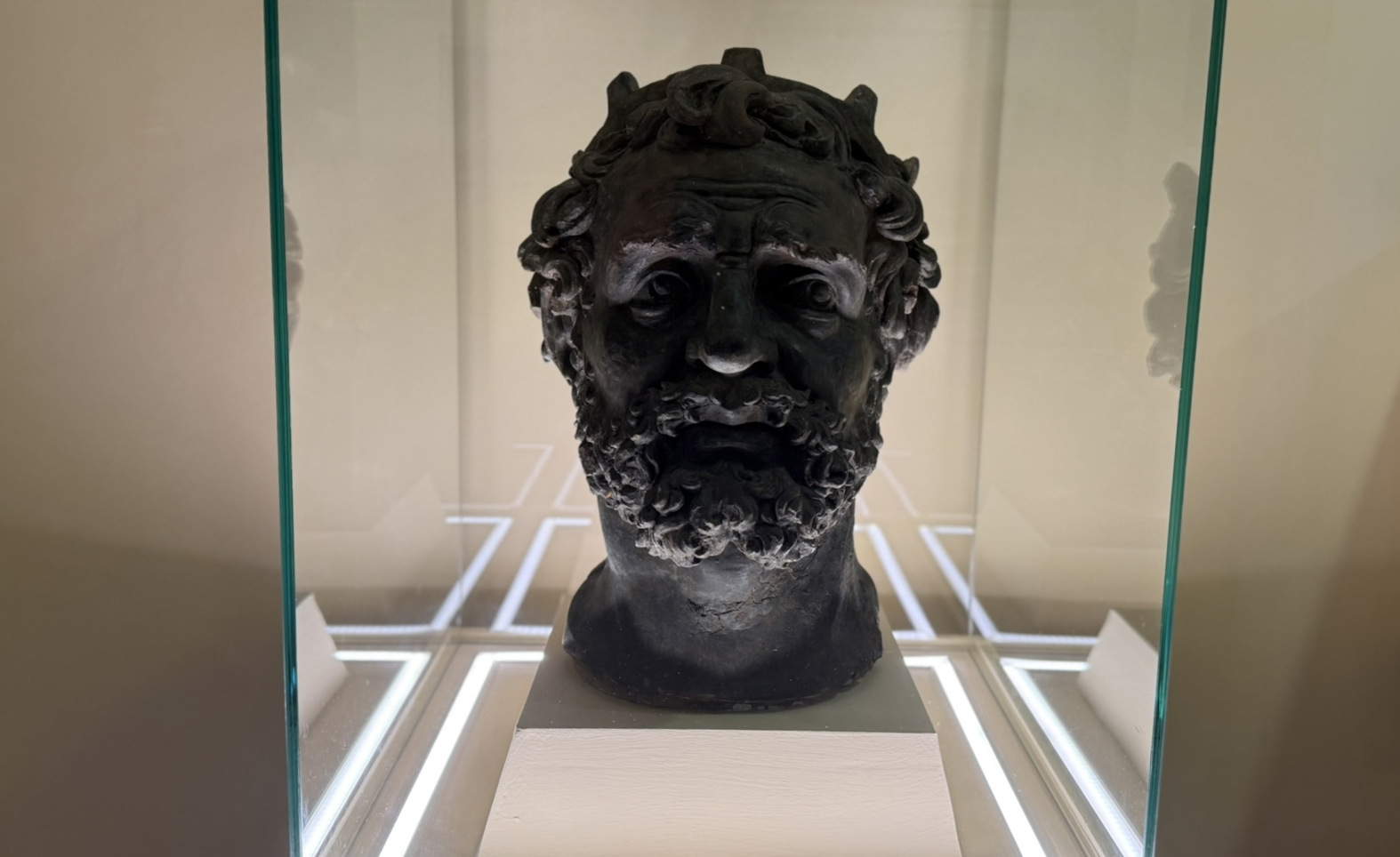From July 10, 2025, to Jan. 6, 2026, the Crociani Civic Art Gallery Museum in Montepulciano will host the exhibition Porsenna between History and Legend, dedicated to the figure of the Etruscan lucumone, celebrated in historical sources, reinterpreted in the arts and the protagonist of identity rewritings that span the centuries. The exhibition aims to explore its ancient and modern fortunes.
On the occasion of the exhibition, the work that Andrea Sansovino created in the early 16th century to celebrate the origins of Montepulciano is on display after five centuries: animposing terracotta sculpture depicting King Porsenna, probably commissioned between 1518 and 1528. Of this monumental figure, about three meters high, only the head remains today, reproduced for the first time in 1641 in the frontispiece of Spinello Benci’s History of the City of Montepulciano, now preserved in the Municipal Library.
Andrea Sansovino, a sculptor of refined sensibility raised in the Florence of Lorenzo the Magnificent and active between Rome and Loreto, consciously chose terracotta as a tribute to the Etruscan tradition and the language of antiquity. The face of the lucumone, with a proud and solemn expression, is embellished with a radiated crown that recalls the imperial iconographies of the Hadrian and Antonine periods, while the realistic rendering of the features recalls the sculptures of the Holy House of Loreto. The Head of King Porsenna represents an emblematic symbol of the rediscovery of Etruscan civilization, considered, in the Renaissance era, the noble and ancient origin of the Medici lineage. It was through this legendary lineage that the Medici felt legitimized to dominate the Tuscan territory.
In 1641, Spinello Benci, secretary to Prince Giovan Carlo de’ Medici, in his History of the City of Montepulciano, recounts that King Porsenna, after the destruction of the city of Chiusi, supposedly took refuge on “mons Mercurii,” where the urbe renamed Mons Politicus, or Montepulciano, was born.
In his Lives, Giorgio Vasari wrote, “and [made Andrea] of land a great figure for Monte Puliciano, that is, a king Porsenna, who was a singular thing....” A few decades after these words were written, the work was destroyed and even the head was lost all trace of it until 1836. Today, thanks to the willingness of the owners, the Head of King Porsenna can be permanently visible again in its very own Montepulciano.
A rich documentary section accompanies the public in the historical and mythical reconstruction of the figure of Porsenna. Authors such as Livy, Pliny and Tacitus celebrate his military exploits, peace treaties, and especially the existence of a grandiose mausoleum-labyrinth built by the king in his city.
It was, however, between the fifteenth and sixteenth centuries that the figure of Porsenna experienced renewed vitality. Humanistic texts such as De gestis Porsenne regis Etruscorum by Leonardo di Piero Dati, a humanist close to Pius II, consolidate the figure of the lucumon, attributing to him the legendary foundation of Montepulciano. This link between myth and town identity is at the center of Spinello Benci’s History of the City of Montepulciano (1641), which places the king’s head alongside the town’s coat of arms, celebrating him as the “fundator” of the Polizian community.
The exhibition is part of the Progetto Etruschi 85/25 program, promoted by the Region of Tuscany and organized by the Fondazione Musei Senesi in collaboration with the Association of Archaeological Museums and Parks of Tuscany. The initiative is carried out together with the Municipality of Montepulciano, the Crociani Civic Art Gallery Museum and the Pro Loco of Montepulciano.
 |
| Montepulciano celebrates the figure of Etruscan lucumon Porsenna. And his Head is back on display after 500 years |
Warning: the translation into English of the original Italian article was created using automatic tools. We undertake to review all articles, but we do not guarantee the total absence of inaccuracies in the translation due to the program. You can find the original by clicking on the ITA button. If you find any mistake,please contact us.